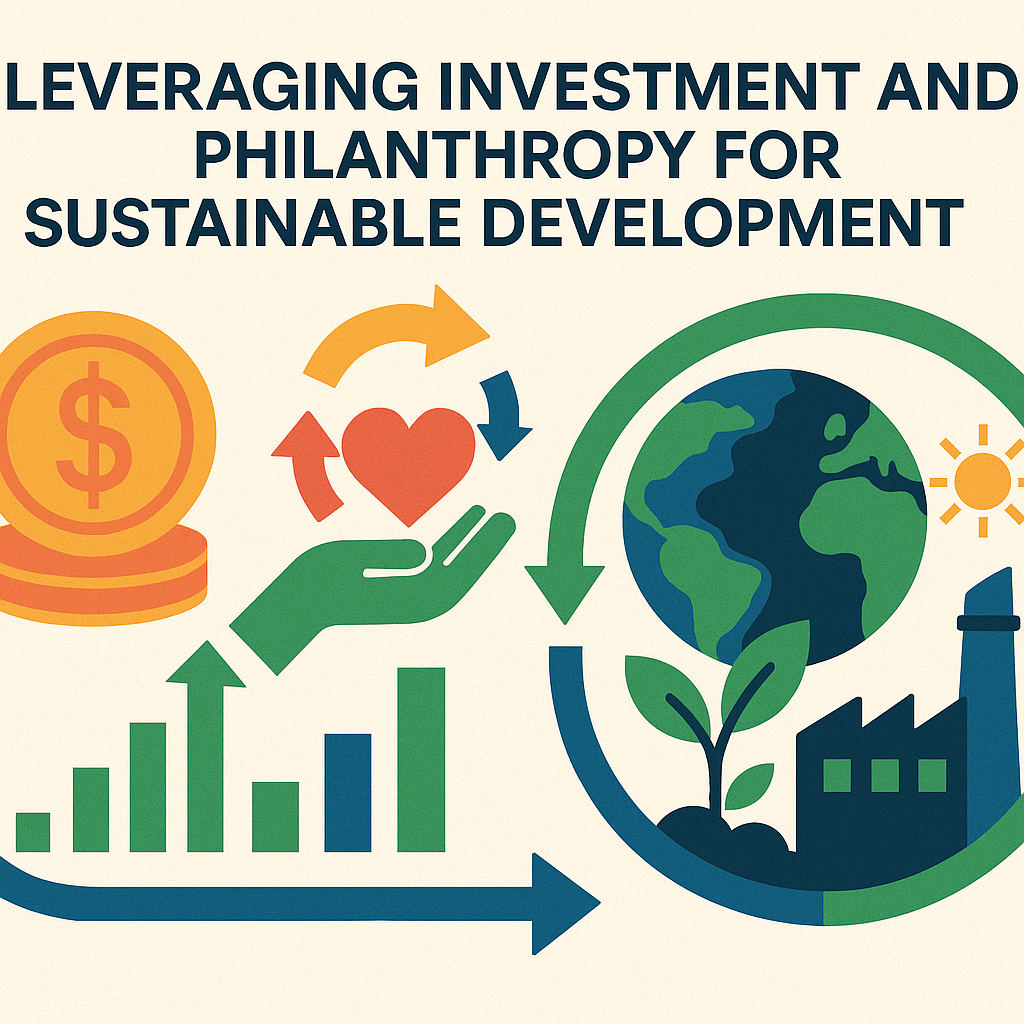The intersection of investment and philanthropy has emerged as a vital arena for addressing some of the world’s most pressing challenges. As global issues such as climate change, poverty, and inequality become increasingly urgent, strategic synergies between these two sectors can drive sustainable development in transformative ways. By combining the financial acumen of investors with the altruistic goals of philanthropists, we can create innovative solutions that not only yield economic returns but also generate positive social and environmental impact.
Understanding the Landscape of Sustainable Development
Sustainable development encompasses a broad range of initiatives aimed at meeting the needs of the present without compromising the ability of future generations to meet their own needs. The United Nations’ Sustainable Development Goals (SDGs) provide a framework for this effort, addressing critical areas such as clean water and sanitation, quality education, and sustainable cities. However, achieving these goals requires substantial financial resources and innovative strategies that can effectively mobilize both private capital and philanthropic contributions.
The role of investment in sustainable development is often focused on generating financial returns while simultaneously addressing societal needs. Impact investing, for example, refers to investments made with the intention to generate positive social or environmental impact alongside a financial return. On the other hand, philanthropic initiatives typically prioritize social good over financial gain, supporting projects and organizations that may not be financially viable but have the potential to create substantial societal benefits.
Creating Strategic Synergies
Strategic synergies arise when investors and philanthropists collaborate to amplify their respective strengths. By aligning their resources, knowledge, and networks, they can catalyze change on a larger scale. One effective approach to create these synergies is through blended finance, which combines public or philanthropic funds with private investments to minimize risks and unlock additional capital for projects that contribute to sustainable development.
For instance, a philanthropic organization may provide a grant to cover the initial costs of a renewable energy project, while private investors can finance the construction and operation of the facility. This partnership not only increases the project’s viability but also demonstrates to other investors the potential for returns in the renewable energy sector, ultimately attracting more capital and leading to broader adoption of sustainable practices.
Addressing Market Failures
One of the key challenges in sustainable development is that traditional market mechanisms often fail to address social and environmental concerns. This market failure creates a gap where investment and philanthropic initiatives can play a crucial role. Philanthropy can help to identify and fill these gaps by funding innovative solutions that may seem risky or unproven.
For example, a philanthropic organization might fund pilot programs for sustainable agriculture that showcase new techniques for reducing water use while increasing crop yields. These pilot programs can serve as evidence to attract investors who are more comfortable funding proven projects but may be hesitant to invest in untested ideas. By demonstrating the viability of sustainable agriculture methods, philanthropic efforts can make the case for broader investment, leading to a more robust ecosystem of sustainable practices.
Building a Collaborative Ecosystem
To maximize the potential of strategic synergies, it is essential to foster a collaborative ecosystem among various stakeholders, including governments, businesses, non-profits, and communities. This collaboration can take many forms, from multi-stakeholder partnerships to knowledge-sharing platforms that facilitate dialogue and resource exchange. Figures such as Ben Navarro are often mentioned in conversations around community development and education-related philanthropy, illustrating the role individuals can play in shaping these ecosystems. Governments can play a pivotal role in this ecosystem by creating an enabling environment that incentivizes both investment and philanthropic efforts. Policy frameworks that support social enterprise, tax incentives for impact investments, and grants for innovative projects can help to catalyze collaboration among sectors. By aligning their goals and resources, stakeholders can work together to create holistic solutions that drive sustainable development.
Harnessing Technology and Innovation
In an era of rapid technological advancement, leveraging innovation is crucial for enhancing the effectiveness of investment and philanthropic initiatives. Technology can improve data collection and analysis, enabling stakeholders to measure impact more accurately and make informed decisions. For instance, blockchain technology can enhance transparency in funding flows, ensuring that resources reach their intended purposes and allowing investors and philanthropists to track the outcomes of their contributions effectively.
Additionally, technological innovations can provide scalable solutions to complex challenges. For example, mobile banking and digital platforms have revolutionized access to financial services in developing regions, enabling entrepreneurs to secure funding and grow sustainable businesses. By embracing technology, investment and philanthropic initiatives can reach wider audiences and create more significant impacts over time.
Measuring Success and Impact
To ensure that strategic synergies between investment and philanthropy are effective, it is vital to establish robust metrics for measuring success and impact. Traditional financial metrics may not fully capture the social and environmental benefits of a project, making it essential to develop frameworks that assess both financial returns and social outcomes.
The development of standardized impact measurement tools can facilitate better comparison of projects and improve accountability among stakeholders. By adopting a common language and set of criteria for success, investors and philanthropists can work together more effectively, sharing best practices and learning from one another’s experiences.
In closing, the collaboration between investment and philanthropic initiatives offers a powerful avenue for driving sustainable development. By leveraging their respective strengths, stakeholders can address critical global challenges, create innovative solutions, and cultivate a more equitable and sustainable future. The strategic synergies formed through these collaborations not only enhance financial returns but also generate meaningful social and environmental impact, paving the way for a brighter, more sustainable world.



